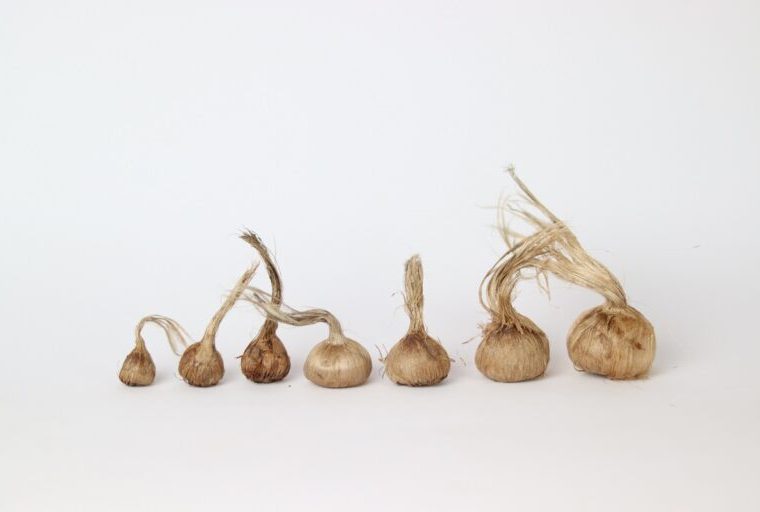To enlarge saffron bulbs, the primary objective must first be established; the main reason for this effort is to increase the efficiency and productivity of the saffron farm. Strengthening the bulbs and enhancing their food reserves leads to greater flowering and the production of higher-quality saffron. It is also recommended to purchase high-quality and fortified saffron bulbs.
In traditional methods, the enlargement of saffron bulbs was not given much attention, and farmers would limit themselves to minimal irrigation and the use of animal manure, such as decomposed cow dung. However, in new methods, such as the ideal method, precise soil preparation and addressing its deficiencies are of great importance.
Five Factors Affecting the Enlargement of Saffron Bulbs
1. Sufficient Moisture: If adequate moisture is not available for the bulbs, even fertilization will not yield the desired results. Methods like potassium alum and foliar spraying can help provide the necessary moisture and nutrients.
2. Soil Texture: Light soil is more suitable for saffron cultivation. A lighter soil texture helps with the multiplication and enlargement of the bulbs.
3. Presence of Macro and Microelements: These elements must be present in the soil so that the bulbs can absorb them effectively. A deficiency of any of these elements can limit the absorption of other nutrients.
4. Climatic Conditions: Saffron bulbs require specific temperatures throughout the different seasons. Minimum temperatures of -15 to -20 degrees Celsius in winter and maximum temperatures of 40 to 45 degrees Celsius in summer are essential for optimal bulb growth.
5. Potassium: This element plays a key role in enlarging saffron bulbs and can be used in various forms, such as potassium nitrate or potassium sulfate. Potassium should be applied both through potassium alum and periodic foliar spraying.
Best Fertilizer for Enlarging Saffron Bulbs
The best fertilizers for strengthening and enlarging saffron bulbs include decomposed animal manure, potassium alum fertilizers, and foliar fertilizers. Proper nutrition and systematic fertilization at various growth stages help saffron bulbs achieve optimal performance.
Potassium Alum or Foliar Spraying?
Both fertilization methods, potassium alum and foliar spraying, are of high importance, and one cannot be preferred over the other. Potassium alum strengthens the roots and enlarges the bulbs, while foliar spraying enhances the overall plant health and increases the quality of the stigmas.
Optimal Size of Saffron Bulbs
Saffron bulbs weighing over 8 grams perform best in the second year and beyond. Although some farmers believe larger bulbs are better, this belief is incorrect because, in subsequent years, the propagated bulbs become smaller and may not yield satisfactory flowering.
Final Words
Saffron bulbs are the most crucial asset of the farm, and their health and strength have a direct impact on annual yields. Strengthening the bulbs should be a priority for every farmer, and this can be achieved through systematic and informed fertilization to attain desirable results.



